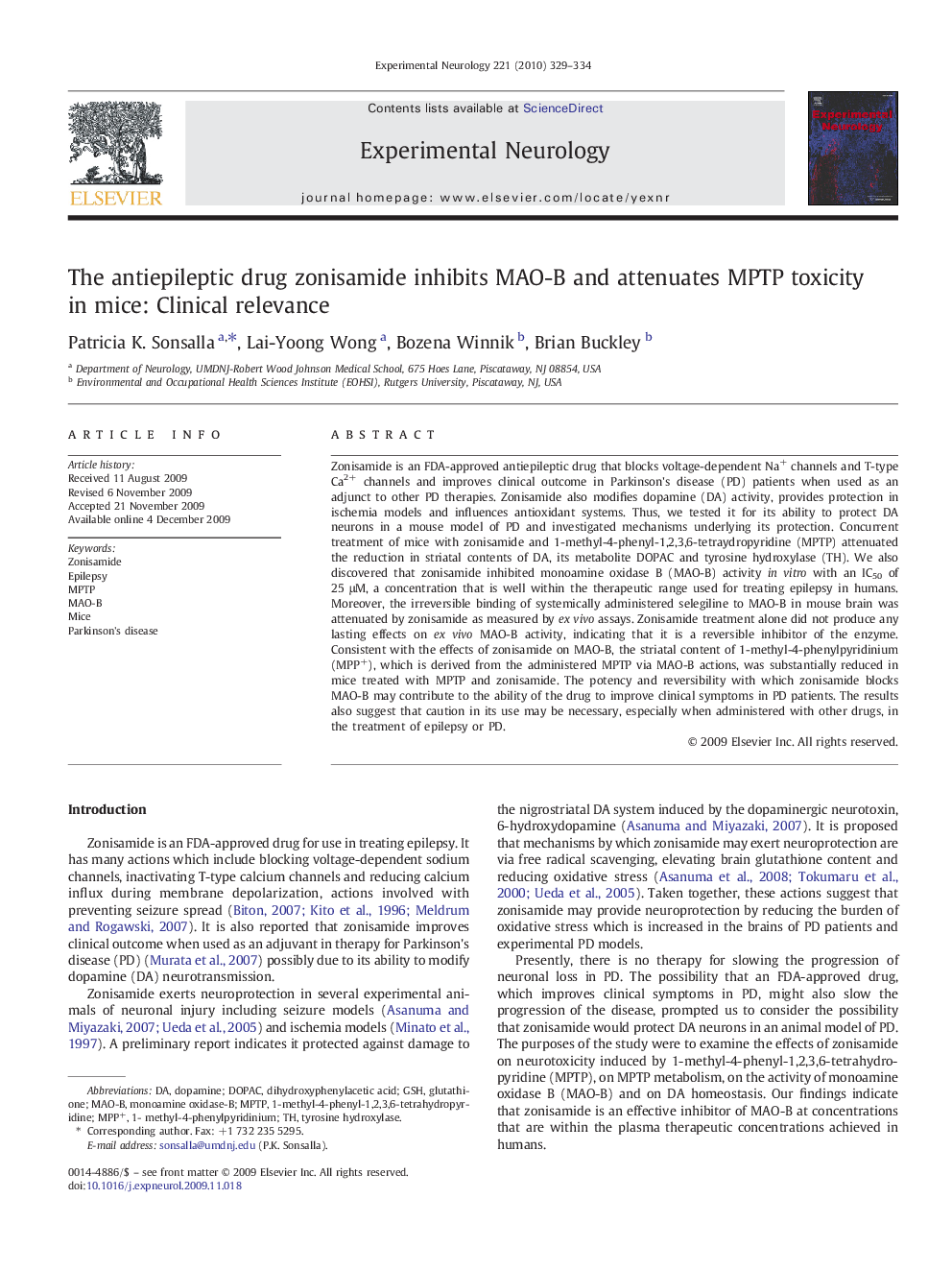| Article ID | Journal | Published Year | Pages | File Type |
|---|---|---|---|---|
| 3056179 | Experimental Neurology | 2010 | 6 Pages |
Zonisamide is an FDA-approved antiepileptic drug that blocks voltage-dependent Na+ channels and T-type Ca2+ channels and improves clinical outcome in Parkinson's disease (PD) patients when used as an adjunct to other PD therapies. Zonisamide also modifies dopamine (DA) activity, provides protection in ischemia models and influences antioxidant systems. Thus, we tested it for its ability to protect DA neurons in a mouse model of PD and investigated mechanisms underlying its protection. Concurrent treatment of mice with zonisamide and 1-methyl-4-phenyl-1,2,3,6-tetraydropyridine (MPTP) attenuated the reduction in striatal contents of DA, its metabolite DOPAC and tyrosine hydroxylase (TH). We also discovered that zonisamide inhibited monoamine oxidase B (MAO-B) activity in vitro with an IC50 of 25 μM, a concentration that is well within the therapeutic range used for treating epilepsy in humans. Moreover, the irreversible binding of systemically administered selegiline to MAO-B in mouse brain was attenuated by zonisamide as measured by ex vivo assays. Zonisamide treatment alone did not produce any lasting effects on ex vivo MAO-B activity, indicating that it is a reversible inhibitor of the enzyme. Consistent with the effects of zonisamide on MAO-B, the striatal content of 1-methyl-4-phenylpyridinium (MPP+), which is derived from the administered MPTP via MAO-B actions, was substantially reduced in mice treated with MPTP and zonisamide. The potency and reversibility with which zonisamide blocks MAO-B may contribute to the ability of the drug to improve clinical symptoms in PD patients. The results also suggest that caution in its use may be necessary, especially when administered with other drugs, in the treatment of epilepsy or PD.
